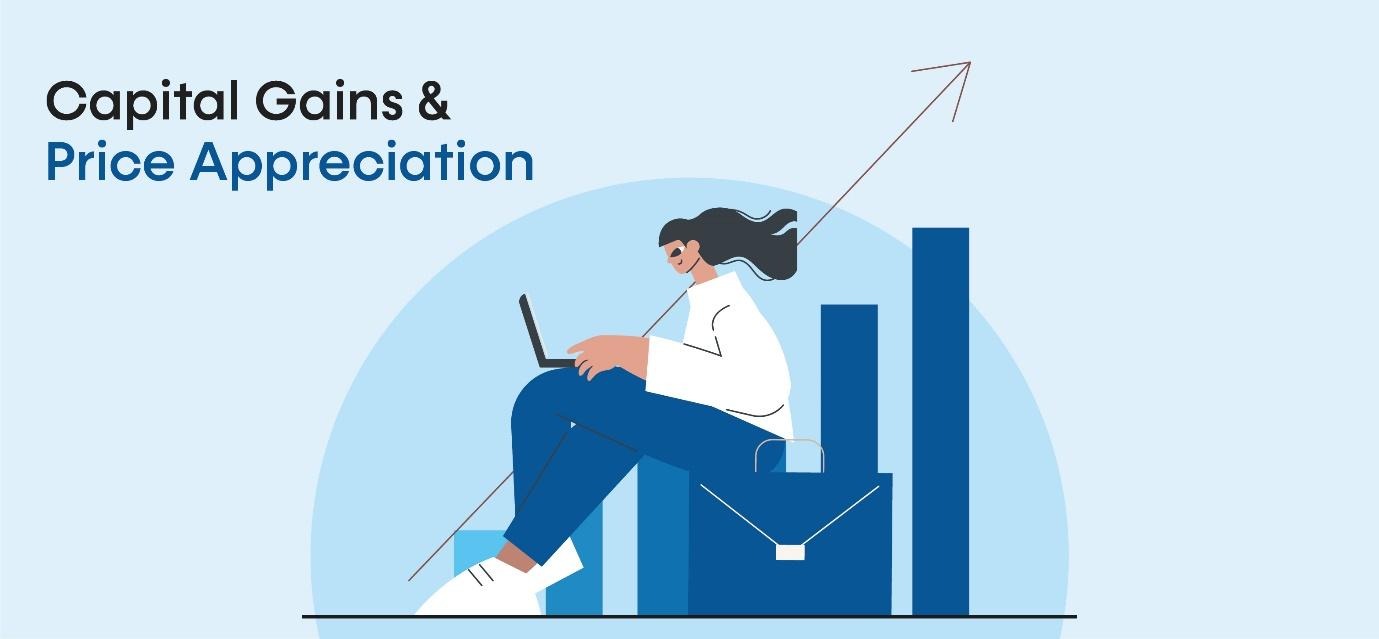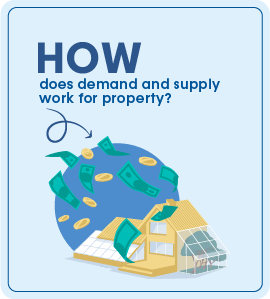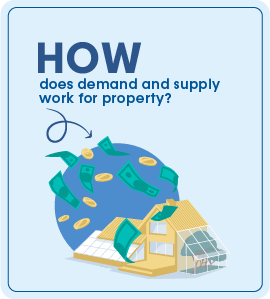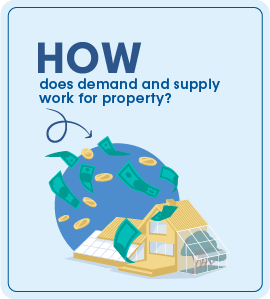Investing Guide
Capital Gains and Price Appreciation

What is Capital Gain?
Capital gain and price appreciation are two synonymously used terms that are used to point at the increase in the price of a resalable commodity over a period of time. The difference between the new increased price and the older price on which the item was bought is the capital gain.

This example may not be relevant in the case of perishable items like food etc. because the increased price will become irrelevant if the item or commodity cannot survive for that long. It is most visible in terms of assets like gold, real estate, stocks, etc. For instance, 1 ounce of gold was priced at 292 USD on 3 Jan 2000; on 2 Mar 2022, the same was priced at 1929 US per ounce. If you bought an ounce of gold on 3 Jan 2000 and sold the same on 2 Mar 2022, then over a period of ~21 years, you would have realized a capital gain of 1637 USD (1929-292) – or 560% on your initial investment!
Likewise, a single stock for Pakistan Petroleum Limited was trading at 31.44 Pakistani rupees on 31 Jan 2005; on 31 Jan 2020 (just before the pandemic hit) it was trading at 142 rupees. If you bought a PPL share on 31 Jan 2005 and sold on 31 Jan 2020, then over a period of 15 years, you would have realized a capital gain of 110.56 PKR (142-31.44) – or 351%. Similar data can be presented in the case of various other commodities like land, rental, commercial properties, etc.

This chart below, from goldprice.com (the same source we used to corroborate our example of buying and selling gold at different times), is edited to further explain the price appreciation or capital gain.
Inflation
The bad news here is that the quality of an investment cannot be judged on capital gain or price appreciation alone. You also need to adjust for factors like inflation. Before moving to how to adjust for inflation, it is important to first address what is inflation.
Every commodity that you buy is traded against a fiat currency e.g. PKR, USD, GBP etc. And these currencies lose value over time. In cases like Pakistan, average inflation rate is 10%. This means that if you hold 100 rupees for a year, it loses 10% of its value. It’s not that your 100 rupees will become 90 after a year. It’s just that you will need to spend 110 rupees to buy something that you could buy for 100 rupees a year ago. If you held on to it for two years, it’s going to be worth 81 PKR and keep reducing 10% for every extra year you hold it.

Conversely, if you saved that hundred rupees in a savings account giving you 10% annual profit, you would have 110 rupees at the end of the year. This is a good saving option where you can hedge yourself against inflation. That said, you need to beat the prevailing inflation rate to ‘increase’ your wealth instead of just sustaining it. These savings accounts can work wonders in your long-term wealth creation owing to the principles of compounding interest. Compounding interest is such a powerful thing that Albert Einstein called it the 8th wonder. He said:
“Compound interest is the 8th wonder of the world. He who understands it; earns it. He who doesn’t; pays it”
Best investment options to Beat Inflation
Most prominent investment options that not only present capital gain but also beat inflation through monthly, quarterly or yearly passive income are rentable real estate and stocks.

If you bought a piece of land or a residence for personal use at 10 million PKR and sold it for double the buying price after 10 years; you have barely retained the worth of your original investment after adjusting for inflation. Conversely, if the same property was rented for 10 years at even 0.3% rental yield (i.e. 30,000/month for 120 months), you would not only have 10 million of price appreciation but also 3.6 million from passive rental income.
Likewise, going back to the example of PPL’s stocks, the company has been issuing dividends to its shareholders at an average 4% of its share’s book value. Therefore, at the end of 15 years, you wouldn’t only realize capital gains of 351% but would also have accumulated a reasonable passive income.
Conclusion
- Capital gain and price appreciation are good – provided they significantly beat prevailing inflation rates.
- They are unbeatable if they generate passive income along the way through dividends or rentals.









